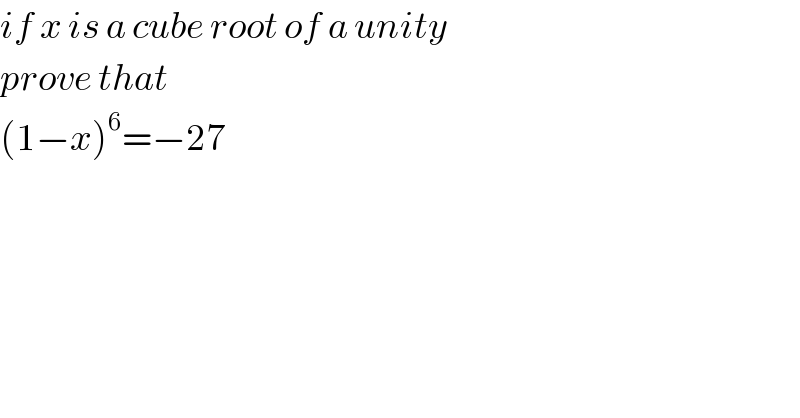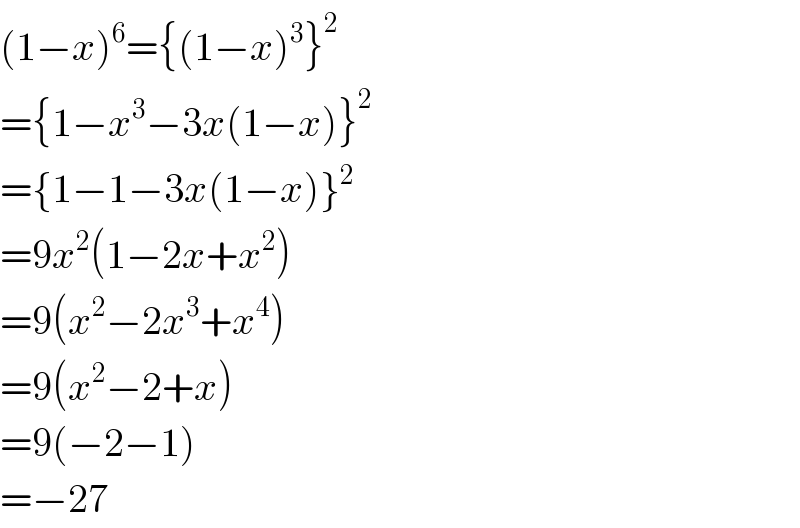
Question and Answers Forum
Question Number 111624 by mathdave last updated on 04/Sep/20

Answered by Her_Majesty last updated on 04/Sep/20

Answered by $@y@m last updated on 04/Sep/20

Commented by Rasheed.Sindhi last updated on 04/Sep/20

Commented by $@y@m last updated on 04/Sep/20

Answered by mathdave last updated on 04/Sep/20
![solution let y^3 =1 y=(1)^(1/3) =(cos(0)+jsin(0))^(1/3) to find the roots let y=(cos2nπ+jsin2nπ)^(1/3) y=(cos((2nπ)/3)+jsin((2nπ)/3)) putting n=0,1,2 which are the roots of the unity at y_n =y_0 =1..........(1) y_1 =[cos((2π)/3)+jsin((2π)/3)]^1 =x ..........(2),at y_2 =[cos((4π)/3)+jsin((4π)/3)]^2 =x^2 ........(3) adding (1),(2), and (3) 1+x+x^2 =1+cos((2π)/3)+jsin((2π)/3)+cos((4π)/3)+jsin((4π)/3) 1+x+x^2 =1+cos(π−(π/3))+jsin(π−(π/3))+cos(π+(π/3))+jsin(π+(π/3)) 1+x+x^2 =1−cos(π/3)+jsin(π/3)−cos((.π)/3)−jsin(π/3) 1+x+x^2 =1−2cos(π/3)=1−2((1/2))=0 1+x+x^2 =0 1+x^2 =−x.........(1) but (1−x)^6 =[(1−x)^2 ]^3 (1−x)^6 =(1−2x+x^2 )^3 =[(1+x^2 )−2x]^3 (1−x)^6 =(−x−2x)^3 =(−3x)^3 (1−x)^6 =−27x^3 but x^3 =1 ∵(1−x)^6 =−27 Q.E.D](Q111777.png)
Commented by Tawa11 last updated on 06/Sep/21

